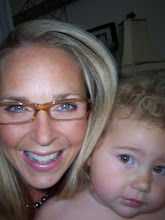Based on my observations I believe that the most widely used leadership approach is an amalgamation of both transformational and transactional leadership. Individually they incorporate different perspectives and tactics but when used in concert or in alternating fashion they can produce an approach that is similar to the (FRLT), full range leadership theory, which encompasses transactional, transformational, and laissez-faire leadership theories. Leadership literature seems to tout that leadership has matured from transactional to transformational (Avolio & Yammarino, 2002). However, alternative assertions state “the best leadership is both transformational and transactional”, and that “transformational leadership augments the effectiveness of transactional leadership, it does not replace transactional leadership” (Walsman, Bass, & Yammarino, 1990). “While the transactional style may be the most prevalent, it produces results that may not be as high as with the transformational style” (Homrig, 2001). Therefore, when using both styles simultaneously, the results produced incorporate the best of both approaches. According to research conducted by Crawford (2005), transformational leaders are found to be more successful over many organizational constructs. In additional research using optimism as a control variable, Harland et.al (2004) evaluated the relationship between leader behavior and subordinate resilience and found that there was greater resilience with the group led with the dimensions of transformational leadership as opposed to the transactional style. These results further bolster research by Bass (1990, 1998) that leadership style impacts and enhances employees’ abilities to cope with stress and adversity. Moving ahead there will be much more research done to reveal more of the underpinnings of each of these different leadership approaches and how they ultimately affect followers and organizational performance. Leadership is about relationships and with more and more focus on the emotional aspects and emotional effects of leadership and the trickle-down effects to followers it seems as though the focus is honing in on transformational leadership as the paramount approach and it will become more widely employed as the global norm.
Avolio, B. & Yammarino, F., (2002). Transformational and charismatic
leadership: The road ahead. Retrieved September 9, 2008 from
https://mycampus.phoenix.edu/secure/resource/resource.asp.
Bass, B. (1997). The Ethics of Transformational Leadership. Kellogg
Leadership Studies Project, Transformational Leadership Working
Papers, The
Retrieved September 9, 2008.
Crawford, C. (2005). Effects of transformational leadership and organizational
position on knowledge management. Journal of Knowledge
Management, 9(6), 6. Retrieved September 9, 2008 from
http://www.apollolibrary.com/ERRNew/ElectronicReserveReadings.asp.
Harland, L., Harrison, W., Jones, J., Reiter-Palmon, R., (2004). Leadership
behaviors and subordinate resilience. Journal of Leadership &
Organizational Studies, Vol. 11, Iss. 2; pg. 2, 13 pgs. Retrieved
September 9, 2008 from
http://proquest.umi.com/pqdweb?did=789855131&sid=5&Fmt=4&client
Homrig, M., (2001). Transformational Leadership. Retrieved September 9,
